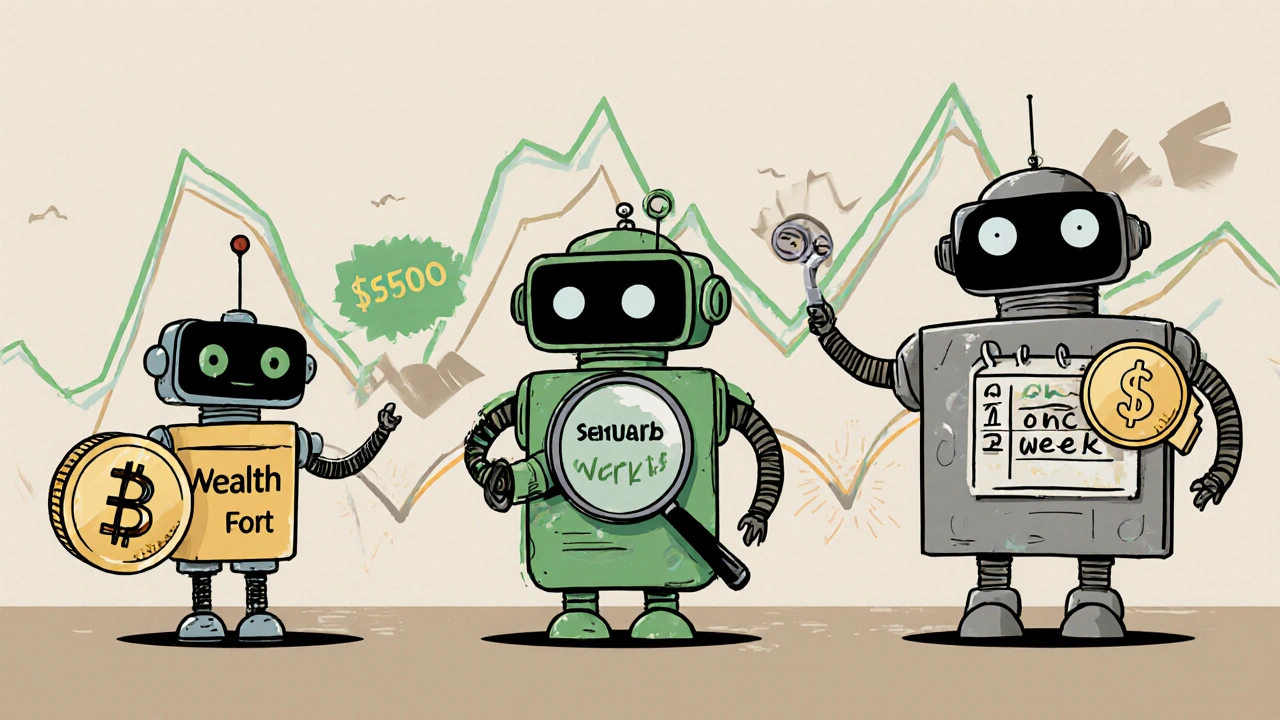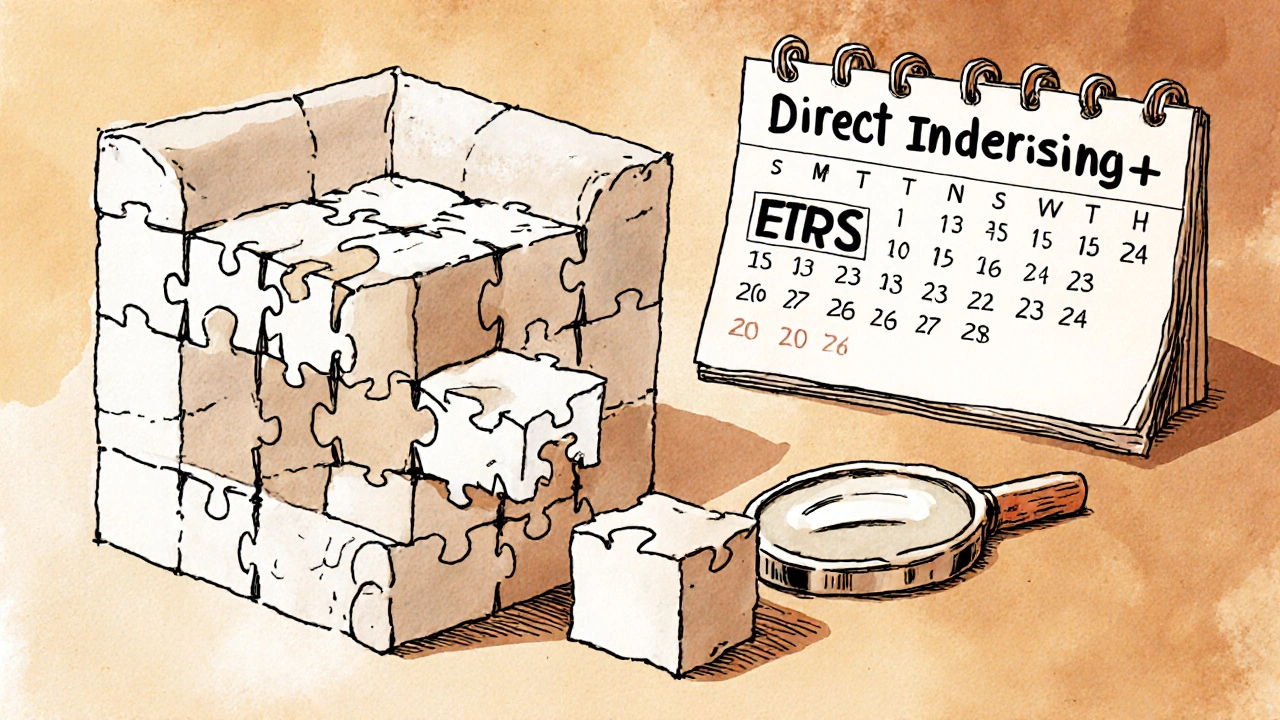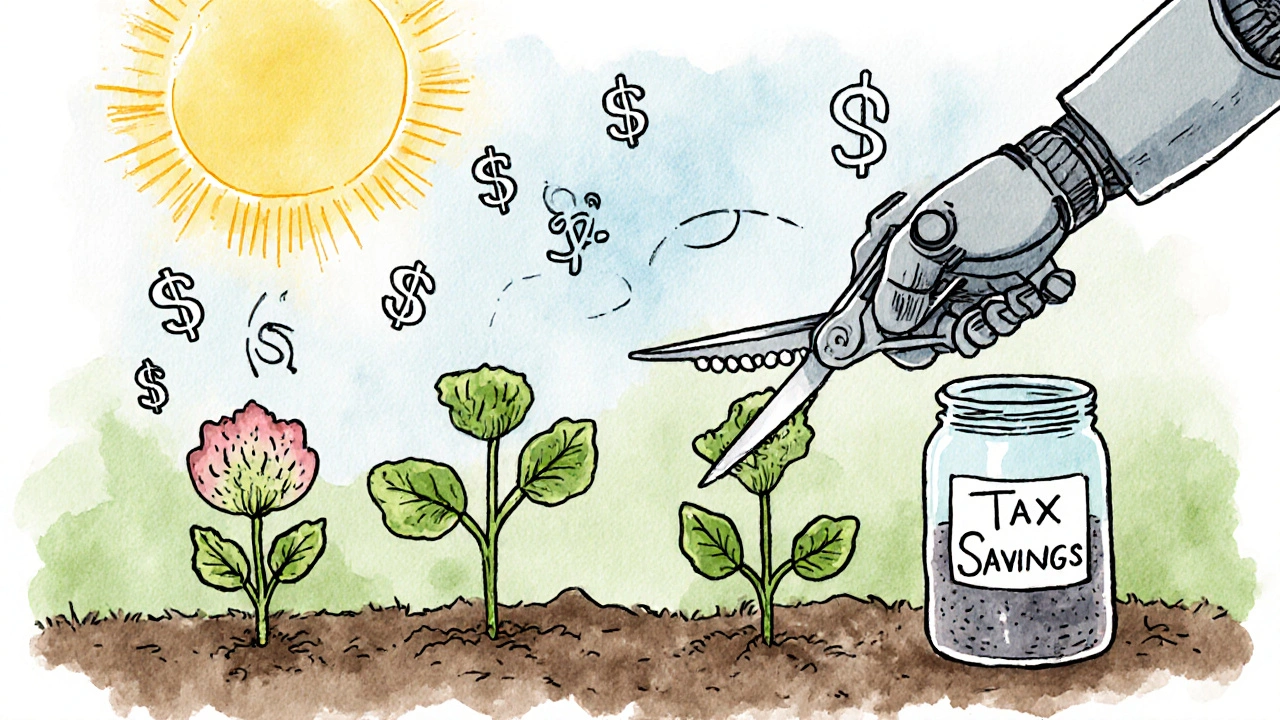Tax-Loss Harvesting Savings Calculator
Your Investment Details
Platform Comparison
Different platforms use different thresholds. A lower threshold means more harvesting opportunities but also higher trading costs.
High opportunity (2-3x more than ETFs)
Standard opportunity
Limited opportunity
Estimated Tax Savings
Your estimated tax savings: $0
Breakdown: $0 from capital gains offset + $0 from income reduction
Platform fees vs. tax savings: $0/year
What Is Tax-Loss Harvesting, Really?
Think of tax-loss harvesting like a smart reset button for your investments. When a stock or ETF in your portfolio drops in value, you sell it to lock in that loss. Then you immediately buy something similar-not the same thing, but close enough-to stay invested in the market. The loss you locked in can then cancel out any capital gains you made elsewhere, or even reduce your taxable income. It’s not about avoiding taxes forever; it’s about shifting when you pay them, usually to a year when you’re in a lower tax bracket.
This isn’t something you do manually once a year. Robo-advisors automate it. They watch your portfolio every day, scanning for drops. When a security falls past a certain point-say, 3% below what you paid-they trigger a sale and replacement. The whole thing happens in seconds, without you lifting a finger. But here’s the catch: not all platforms do it the same way. The threshold, the frequency, the tools they use-all vary. And that makes a real difference in your wallet.
How Low Do You Have to Go Before They Sell?
The magic number that triggers a tax-loss harvest isn’t public. Robo-advisors guard it like a secret recipe. But based on analysis from researchers, investor reports, and platform behavior, most use thresholds between 2% and 5% below cost basis. Wealthfront, for example, has historically triggered harvests around 3.5%. Betterment seems to hover near 3%. Schwab Intelligent Portfolios? It’s been slower-closer to 5%-until their June 2025 update, when they lowered it to around 3% after hearing from clients who felt they were missing opportunities.
Why does this matter? A lower threshold means more chances to harvest. If your portfolio drops 2.8%, Wealthfront might act. Schwab might wait until it hits 4.5%. In a volatile market, that difference can mean hundreds more in tax savings. In a calm market? It might mean nothing at all. Tax-loss harvesting only works when prices fall. In 2021, when the market barely dipped, Wealthfront’s TLH added just 0.15% to returns. In 2022, when stocks dropped hard, it added 0.82%.
Direct Indexing vs. ETFs: The Hidden Advantage
Most robo-advisors use ETFs to keep things simple and cheap. But Wealthfront changed the game in 2022 with its Direct Indexing+ feature. Instead of buying a small-cap ETF, they buy dozens of individual small-cap stocks. That means when one of those stocks drops 2%, they can sell just that one-and keep the rest. No need to swap ETFs. More precision. More opportunities.
Hive AI’s 2025 analysis found that Direct Indexing+ creates 2 to 3 times more harvesting opportunities than traditional ETF-based systems. That’s not just theory. One user with a $150,000 portfolio reported $3,200 in tax savings from Wealthfront’s TLH during the 2023 banking crisis. A friend with Betterment, same portfolio size, only got $1,800. That gap? Partly because Betterment still relies mostly on ETF swaps.
But Direct Indexing+ isn’t for everyone. It needs bigger portfolios-usually over $100,000-to be cost-effective. If you’ve got $20,000, you’re stuck with ETFs. And even then, the IRS still watches for wash sales. You can’t buy the exact same ETF. So Wealthfront swaps Vanguard’s small-cap ETF for iShares’ instead. It’s legal. It works. But it’s not perfect. Tracking error creeps in. That’s why some experts warn: don’t assume every harvest is pure profit.

Who Has the Lowest Minimum?
Not all platforms let you in the door. Betterment is the most open. If you’ve got $10,000 in a taxable account, TLH kicks in automatically. No extra fee. No opt-in. Just done. Fidelity Go? You need $25,000. Schwab Intelligent Portfolios? $5,000. Wealthfront? $500. That’s right-$500. If you’re just starting out, Wealthfront gives you access to the same system as someone with $500,000.
But here’s the twist: Interactive Advisors doesn’t auto-harvest at all. You have to turn it on manually, and you need $100,000 to even qualify. They’ll show you a projected tax benefit and ask if you want to proceed. It’s more control, but also more work. And if you forget to check, you miss out.
Why the big differences? It’s about cost. Automating TLH takes computing power, legal oversight, and trading infrastructure. Platforms with lower minimums make up for it with higher fees. Betterment charges 0.25% AUM for accounts with TLH. Without it? 0.15%. That 0.1% difference adds up. For a $50,000 portfolio, it’s $50 a year. For $200,000? $200. So if you’re on the edge of a minimum, ask yourself: is the tax savings worth the extra fee?
Why Schwab Falls Behind
Schwab Intelligent Portfolios sounds like a solid option. Low fees. Big brand. But when it comes to tax-loss harvesting, it’s lagging. Yale’s 2023 research paper called out Schwab for favoring its own ETFs over better alternatives. That means when a holding drops, Schwab might replace it with another Schwab ETF-even if a competitor’s fund would track the market more closely or offer a bigger loss to harvest.
The result? Less efficient harvesting. In NerdWallet’s 2025 comparison, a $100,000 portfolio at Schwab generated only $720 in tax savings during the 2022 downturn. Betterment pulled in $980. Wealthfront? $1,240. That’s a $520 gap just from platform choice.
Plus, Schwab only checks for harvest opportunities once a week. Betterment and Wealthfront scan daily. In a fast-moving market, that delay can mean missing a 3% drop that lasts only two days. By the time Schwab acts, the price has bounced back. No loss to harvest. No tax benefit.
It’s not that Schwab is broken. It’s just not optimized for tax efficiency. If you’re here for low fees and simple investing, fine. But if you’re serious about keeping more of your returns, you’re better off elsewhere.

What You Can’t Harvest (And Why)
Tax-loss harvesting only works in taxable accounts. That means IRAs, Roth IRAs, 401(k)s-none of those qualify. Why? Because you don’t pay capital gains taxes inside those accounts. There’s nothing to offset. Selling a losing stock in your Roth IRA doesn’t help your tax bill. It just moves money around.
Also, you can’t harvest if you’re not in a position to benefit. If you have no capital gains this year and your income is low enough that you pay 0% on long-term gains, the loss doesn’t do much. You can only use up to $3,000 of capital losses to reduce ordinary income per year. Anything beyond that carries forward. So if you’re in your 20s with a $40,000 salary, TLH might not matter yet.
And don’t forget trading costs. Every harvest means a buy and a sell. That’s two trades. If you’re harvesting too often, those fees eat into your gains. Hive AI found cases where aggressive harvesting cost investors 0.2-0.4% in net returns. That’s more than the tax savings. So it’s not just about how low the threshold is-it’s about whether the harvest is worth the cost.
Is It Worth It for You?
Here’s how to know if TLH is right for your situation:
- You have a taxable brokerage account (not an IRA)
- Your portfolio is $10,000 or more
- You’ve had capital gains in the past year, or you expect to
- You’re in a 15% or higher tax bracket
- You’re okay with a small amount of tracking error (ETF swaps aren’t perfect)
If you meet those, then yes-it’s worth it. The average user gains 0.3-0.8% in after-tax returns annually. That’s not flashy, but over 20 years, it compounds into tens of thousands.
But if you’re under $10,000, or you’re in a 0% capital gains bracket, or you’re actively trading on your own-you might be better off skipping it. Don’t let the hype fool you. TLH isn’t magic. It’s math. And math only helps when the numbers line up.
What’s Next for Tax-Loss Harvesting?
Platforms are getting smarter. Betterment’s new Tax Impact Preview, launched in March 2025, shows you exactly how much you’ll save before you commit. No more guessing. Wealthfront’s Direct Indexing+ now includes municipal bonds, opening up new harvesting paths for high-income earners in states with high taxes.
But the biggest shift? AI. Hive AI predicts that by 2027, robo-advisors will use agentic AI to predict market dips before they happen-triggering harvests proactively, not reactively. Imagine your portfolio selling before the drop, not after. That’s the future.
Still, experts warn: don’t chase perfection. Yale’s Jonathan Lam says the sweet spot for thresholds is still 2-5%. Going lower might sound better, but it adds complexity without real benefit. The best TLH system isn’t the one that harvests the most. It’s the one that harvests the right losses-cleanly, efficiently, and without hidden costs.

Comments (5)
Kenny McMiller
Look, TLH isn't magic-it's just arbitrage with a tax code loophole. The real play is in the tracking error arbitrage: when Wealthfront swaps a Vanguard small-cap ETF for iShares, you're not just harvesting losses, you're capturing the bid-ask spread of index inefficiencies. That 0.82% bump in 2022? That’s not ‘smart investing,’ that’s statistical edge exploiting liquidity mismatches between ETF structures. And Schwab’s weekly scan? That’s not negligence-it’s institutional inertia. They’re optimizing for volume, not variance. The threshold isn’t 3% or 5%, it’s the cost of computational overhead versus marginal tax savings. If you’re below $50k, you’re paying more in implicit fees than you’re saving. TLH is a tool for the capital-rich, not the capital-curious.
Dave McPherson
Ugh. Another ‘tax-loss harvesting is great’ blogpost disguised as finance journalism. Let’s be real-this whole thing is a glorified version of selling your grandma’s china at a garage sale because the market dipped 2.8%, then buying a knockoff from eBay. And don’t get me started on ‘Direct Indexing+’-it’s just ETFs with a side of overengineering. $100k minimum? That’s not inclusion, that’s exclusivity dressed up as innovation. Meanwhile, I’m over here with $8k in a Roth, wondering why I’m being told to care about tax-loss harvesting like it’s the new crypto. It’s not. It’s math for people who have too much money and not enough hobbies.
RAHUL KUSHWAHA
Thanks for the detailed breakdown 😊 I’m from India and just starting with investing, so this helped me understand how different platforms compare. I didn’t realize TLH only works in taxable accounts-I thought it applied everywhere. Now I know to focus on building my taxable portfolio first before worrying about harvesting. Small steps, right? 🙏
Julia Czinna
There’s something quietly brilliant about how Wealthfront’s $500 minimum democratizes access to institutional-grade tax optimization. Most people think robo-advisors are just automated index funds-but this is where they become true financial assistants. The fact that they’re now incorporating municipal bonds into Direct Indexing+ is a quiet revolution for high-income earners in California and New York. And yes, Schwab’s weekly scans are painfully outdated, but let’s not forget: not everyone wants to micromanage their portfolio. Sometimes, simplicity is the most sophisticated strategy. The real win? Knowing your platform’s threshold and sticking with it. Consistency beats perfection every time.
Laura W
TLH at $500? Sign me up. I’m 24, making $45k, and this is the first time I’ve felt like my money isn’t just sitting there getting eaten by inflation. 💸